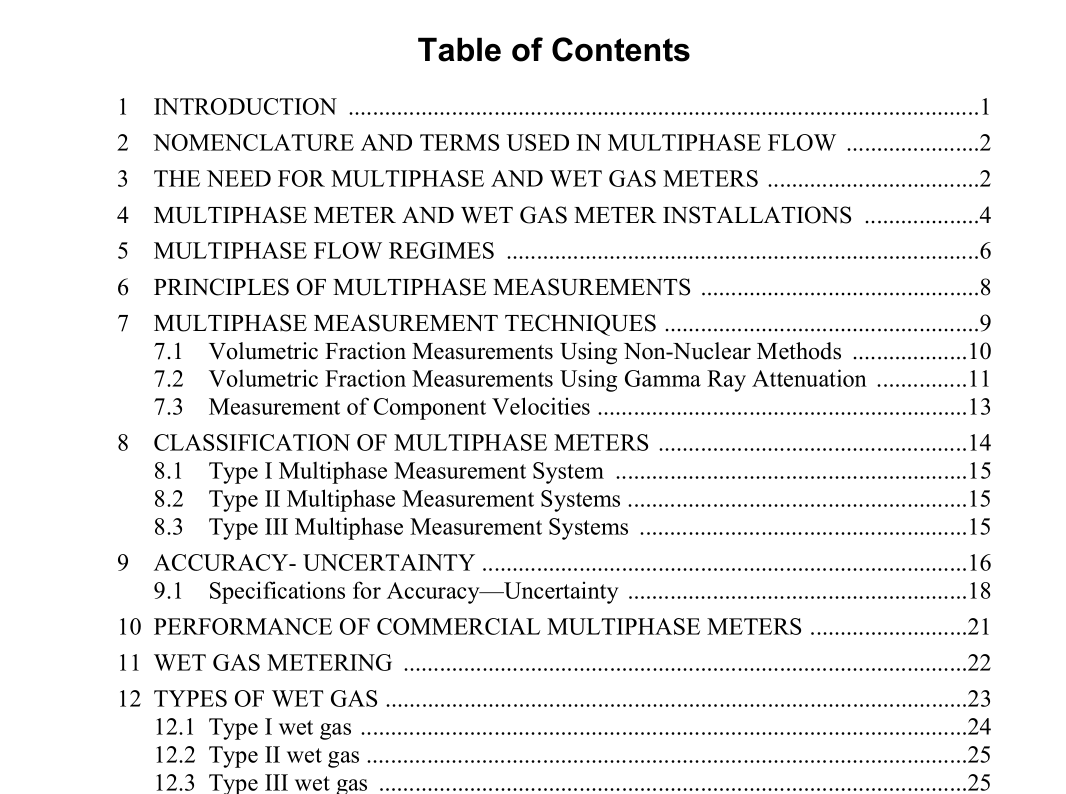API Publ 2566 pdf download

API Publ 2566 pdf download.State of the Art Multiphase Flow Metering
2- NOMENCLATURE AND TERMS USED IN MULTIPHASE FLOW
A number of terms and definitions are employed in describing multiphase flow and measurements. The Norwegian Society For Oil and Gas Measurement (NFOGM) have catalogued these terms in their Handbook Of Multiphase Metering” in reference XII-3. As a contribution to further the use of common terminology, and acknowledgement to the NFOGM efforts, this report has adopted these terms rather than develop new definitions. These terms and nomenclature, described in Appendix 1, are taken from reference XII-3 and will be used in this report to describe multiphase flow and measurement processes.
3- THE NEED FOR MULTIPHASE AND WET GAS METERS
Multiphase meters are devices that measure oil, gas, and water flow rates of a well stream without separating these components into individual phases. The new multiphase metering techniques were developed to replace the conventional two and three-phase gravity based test separators that have been making multiphase measurements in production operations. Well tests are conducted routinely to monitor the flow rates from wells and forecast production. The well test data are also used for reservoir management, production diagnostics and optimization and in some cases even production measurement. To obtain accurate and consistent test results from conventional well testing systems, the equipment requires high maintenance, field personnel intervention, and time to perform tests. The interest in the new multiphase meters for well testing was stimulated by several factors: • The cost and size of conventional two and three phase test separators, particularly offshore (II-23). • The testing time, high maintenance and field personnel required to get accurate and consistent test results from conventional gravity based separators. • Chemical or mechanical interventions that may become necessary when foaming or tight emulsions create problems separating phases using conventional gravity based test separators (IV-2, IV-14). • Field personnel intervention needed to get fluid samples for water cut analysis (II-26, IV-13). These interventions further increase the cost and contribute to the inaccuracy and lack of repeatability of well tests (II-17, XI- 8). • Systems that could be installed subsea
The attractiveness of the new multiphase metering systems, operating unattended and without the need for phase separation, stemmed from their potential to avoid or overcome some of the above operational problems. Multiphase meters provide a system that can be installed subsea. In addition, these advantages can produce significant savings especially in offshore operations. The less bulky and lighter weight of multiphase meters was a major attraction for the installation offshore and therefore a significant influence in the evaluation of the technology, especially for operators in the North Sea (II-19, II- 22) and the Gulf of Mexico. The oil industry has recognized the potential benefits of the new multiphase meters (II- 10 to 16). A systematic effort was undertaken in the 90’s by several North Sea operators to identify potential multiphase metering applications, reservoir engineering needs, and meter performances for a number of asset developments in North Sea (II-22). For the past 10 years, considerable effort has gone into developing multiphase meters that can measure gas, oil, and water flow rates at wellhead conditions (II-1). These efforts have led to the development and marketing of several types of multiphase meters. In the past five years, the meter manufacturers and operators have jointly tested multiphase meters under a variety of field conditions to evaluate their performances. In the next sections of this paper, we shall look at the trends in installations of multiphase metering systems.









